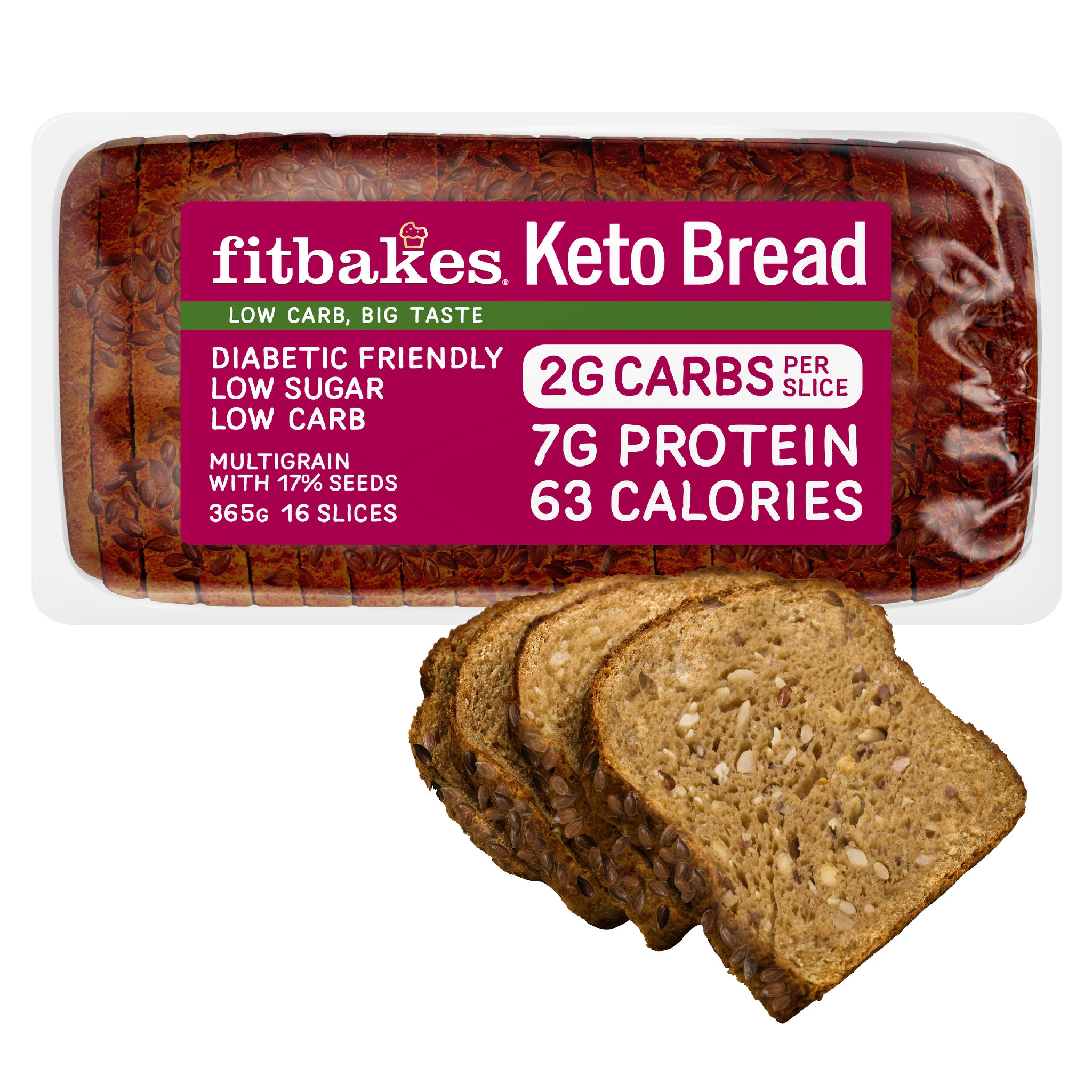The keto diet and bread have long been seen as incompatible. The traditional bread is made from refined wheat flour, a dense source of carbohydrates. One bite of bread could impede the ketosis process by increasing blood sugar and causing your body to burn glucose rather than fat. Many keto enthusiasts avoided bread entirely, eschewing on the convenience and pleasure it brought to their every day meals. However, the development of baking techniques is changing the way we eat.

Image credit: fitbakes.co.uk
What is the truth about Ketogenic Diet Bread?
The ketogenic diet isn’t just low-carb It’s also designed to be strategic. Bakers substitute carb-rich flours with coconut, almond, or flaxseed meal, mixing them with eggs or plant-based proteins to create bread that’s rich in nutrition and nutrient but is almost completely carb-free. The amount of protein, typically approximately 7 grams per piece is what makes this loaf not only keto-compliant, but also helps with recovery of muscle and the regulation of appetite.
It is also crucial to look at the amount of seeds. The keto bread is filled with omega-3s and fiber thanks to seeds. These nutrients promote cardiovascular health, improve digestion and help those who consume keto food to remain full and avoid cravings. Keto bread isn’t the same as typical low-calorie breads, which sacrifice taste. Instead, it is focused on health and flavor.
The Role of the Lowest Carb Bread in Blood Sugar Management
The bread with the lowest amount of carbs is more powerful than just a diet friendly option. It’s also a way for improving metabolic health. The bread, which has just 1-2 grams of net carbs per serving, helps to stabilize blood glucose levels, while minimizing spikes, crashes and fatigue. For diabetics this bread is not just convenient, it’s transformative. It provides the same sensory delight of eating bread as well as a safe glucose level, making it an unusual combination of comfort and control.
Low carb bread also fits well into diets with calorie restrictions. With 63 calories in each slice, you can enjoy breakfast toast or a hearty meal without feeling guilt-free. Weight management individuals can use it to satisfy their cravings and keep the calories and carbs down.
Bread on Keto is an Efficacious Everyday Solution
The expression “bread on keto” no longer indicates compromise. Instead, it highlights opportunity. Breakfasts can be as simple as avocado toast with seeded ketobread, which provides healthy nutrients and fiber in the form of a balanced breakfast. You can still have sandwiches of turkey and cheese for lunch on the go without going over your daily carbs. Comfort foods such as garlic bread, which is low in carbs, are great for dinner.
One of the main benefits of ketogenic breads is their versatility. It’s not just a dessert it’s a staple of an enduring keto-friendly lifestyle. It can be included in every meal of the day and helps eliminate the feeling of a lack of freedom that causes people to stop their diets.
Keto Bread is the Future of a Healthy Lifestyle
Beyond keto The breads that are being used in keto are having an impact on the future health-conscious diets. The high fiber content along with plant-based protein and omega-rich seeds are ingredients that can benefit anyone, not only those who are cutting carbs. Keto bread is a popular choice for overweight, diabetics, and athletes people as well as those simply looking for a healthier alternative in place of white bread.
Keto bread isn’t just a trend for diets. It’s a significant advancement in baking. It is a solution to about how to eat bread with no carbs, while simultaneously delivering long-term health benefits.
Conclusion
The war between the keto diet and bread has ended. With the help of technology ketogenic diet bread offers the indulgence of a slice without compromising ketosis. With the lowest carb bread being available that allows people to take advantage of toast, sandwiches, and snacks without worry of falling short of their low-carb goals. Bread made on keto is more than an alternative. It’s become the cornerstone of modern nutrition, and is bridging comfort food and healthy living.